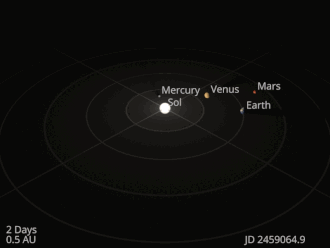
Back Ашықәс Abkhazian Jaar Afrikaans Jahr ALS አመት Amharic Anyo AN Gēar ANG Acha ANN سنة Arabic ܫܢܬܐ (ܙܒܢܐ) ARC عام ARY

The year is a unit of time based on the roughly 365¼ days taken by the Earth to revolve around the Sun.[1] The contemporary calendar year, based on the Gregorian solar calendar, approximates this cycle.
The term "year" is also used to indicate other periods of roughly similar duration, such as the roughly 354-day cycle of the Moon's phases (see lunar calendar), as well as periods loosely associated with the calendar or astronomical year, such as the seasonal year, the fiscal year, the academic year, etc.
Due to the Earth's axial tilt, the course of a year sees the passing of the seasons, marked by changes in weather, the hours of daylight, and, consequently, vegetation and soil fertility. In temperate and subpolar regions around the planet, four seasons are generally recognized: spring, summer, autumn, and winter. In tropical and subtropical regions, several geographical sectors do not present defined seasons; but in the seasonal tropics, the annual wet and dry seasons are recognized and tracked.
By extension, the term "year" can also be applied to the time taken for any astronomical object to revolve around its primary, as for example the Martian year of roughly 1.88 Earth years.
The term can also be used in reference to any long period or cycle, such as the Great Year.[2]